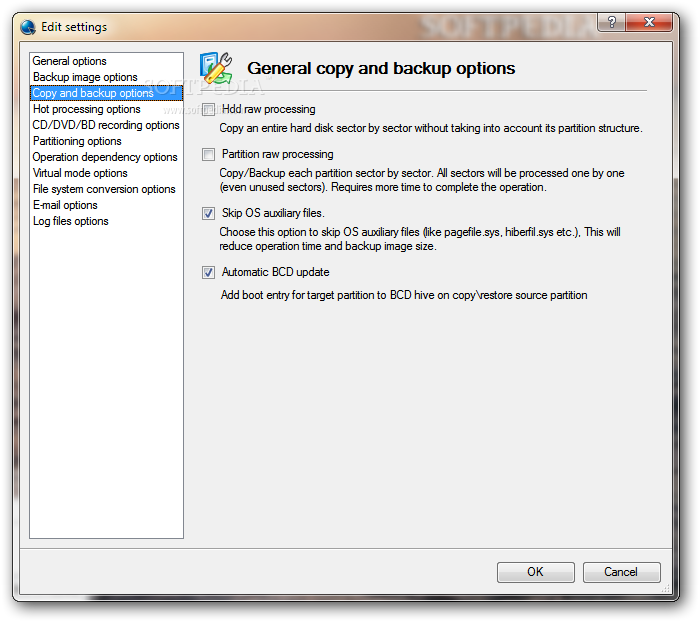
- #Paragon partition manager 12 file system integrity check stuck at 0 update#
- #Paragon partition manager 12 file system integrity check stuck at 0 full#
- #Paragon partition manager 12 file system integrity check stuck at 0 windows 7#
- #Paragon partition manager 12 file system integrity check stuck at 0 free#
With the increase of capacity and the increase of data being transferred, the write operation needs to be made more efficient. Current digital cameras using FAT32 will break the video files into multiple segments of approximately 2 or 4 GB. The exFAT format allows individual files larger than 4 GB, facilitating long continuous recording of HD video which can exceed the 4 GB limit in less than an hour. The optional TexFAT component adds support for additional backup tables and maps, but may not be supported. FAT file systems instead used alternating tables, as this allowed recovery of the file system if the media was ejected during a write (which occurs frequently in practice with removable media).
#Paragon partition manager 12 file system integrity check stuck at 0 free#
The standard exFAT implementation is not journaled and only uses a single file allocation table and free space map.
#Paragon partition manager 12 file system integrity check stuck at 0 full#
Windows 10 only allows formatting exFAT on volumes sized 32 GB or larger with the default user interface, and FAT32 format is suggested for lower sizes command-line utilities still accept a full range of file systems and allocation unit sizes.
#Paragon partition manager 12 file system integrity check stuck at 0 windows 7#
Windows 7 removes this limitation, enabling ReadyBoost caches larger than 4 GB. Windows Vista is unable to use exFAT drives for ReadyBoost.
#Paragon partition manager 12 file system integrity check stuck at 0 update#
Windows XP requires update KB955704 to be installed and Windows Vista requires its SP1 or SP2 be installed.
 exFAT no longer stores the short 8.3 filename references in directory structure and natively uses extended file names, whereas legacy FAT versions implement extended file names through the VFAT extension.
exFAT no longer stores the short 8.3 filename references in directory structure and natively uses extended file names, whereas legacy FAT versions implement extended file names through the VFAT extension. 
directory entries that appear in subdirectories.
Valid Data Length (VDL): through the use of two distinct lengths fields, one for "allocated space" and the other for "valid data", exFAT can preallocate a file without leaking data that was previously on-disk. Provision for OEM-definable parameters to customize the file system for specific device characteristics. Boundary alignment offset for the data region. Boundary alignment offset for the FAT table. Optional support for TexFAT, a transactional file system standard (optionally WinCE activated function, not supported in Windows Desktop/Server versions).  Optional support for access control lists (not currently supported in Windows Desktop/Server versions). Timestamps come with a time zone marker in offset relative to UTC (starting with Vista SP2). Timestamp granularity for Last Access time to double seconds (FAT had date only). Timestamp granularity of 10 ms for Create and Modified times (down from 2 s of FAT, but not as fine as NTFS's 100 ns). Free space allocation and delete performance improved due to introduction of a free space bitmap. Maximum number of files on volume C, to 4,294,967,285 ( 2 32 − 11, up from ca.
Optional support for access control lists (not currently supported in Windows Desktop/Server versions). Timestamps come with a time zone marker in offset relative to UTC (starting with Vista SP2). Timestamp granularity for Last Access time to double seconds (FAT had date only). Timestamp granularity of 10 ms for Create and Modified times (down from 2 s of FAT, but not as fine as NTFS's 100 ns). Free space allocation and delete performance improved due to introduction of a free space bitmap. Maximum number of files on volume C, to 4,294,967,285 ( 2 32 − 11, up from ca. 
FAT32 implementations in other operating systems allow an unlimited number of files up to the number of available clusters (that is, up to 268,304,373 files on volumes without long filenames). Microsoft documents a limit of 65,534 (2 16−2) files per sub-directory for their FAT32 implementation, but other operating systems have no special limit for the number of files in a FAT32 directory.
Support for up to 2,796,202 files per directory. 128 PB ( 2 57−1 bytes) maximum, 512 TB ( 2 49−1 bytes) recommended maximum, raised from the 32-bit limit (2 TB for a sector size of 512 bytes) of standard FAT32 partitions. Other specifications, features, and requirements of the exFAT file system include: Therefore, for the typical user, this enables seamless interoperability between Windows and macOS platforms for files in excess of 4 GB. The entire File Allocation Table (FAT) family, exFAT included, is used for embedded systems because it is lightweight and is better suited for solutions that have low memory and low power requirements, and can be easily implemented in firmware.īecause file size references are stored in eight instead of four bytes, the file size limit has increased to 16 exabytes (EB) ( 2 64−1 bytes, or about 10 19 bytes, which is otherwise limited by a maximum volume size of 128 PB, or 2 57−1 bytes), raised from 4 GB ( 2 32−1 bytes) in a standard FAT32 file system. Most of the vendors signing on for licences are manufacturers of embedded systems or device manufacturers that produce media formatted with exFAT. ExFAT was introduced in late 2006 as part of Windows CE 6.0, an embedded Windows operating system.








 0 kommentar(er)
0 kommentar(er)
